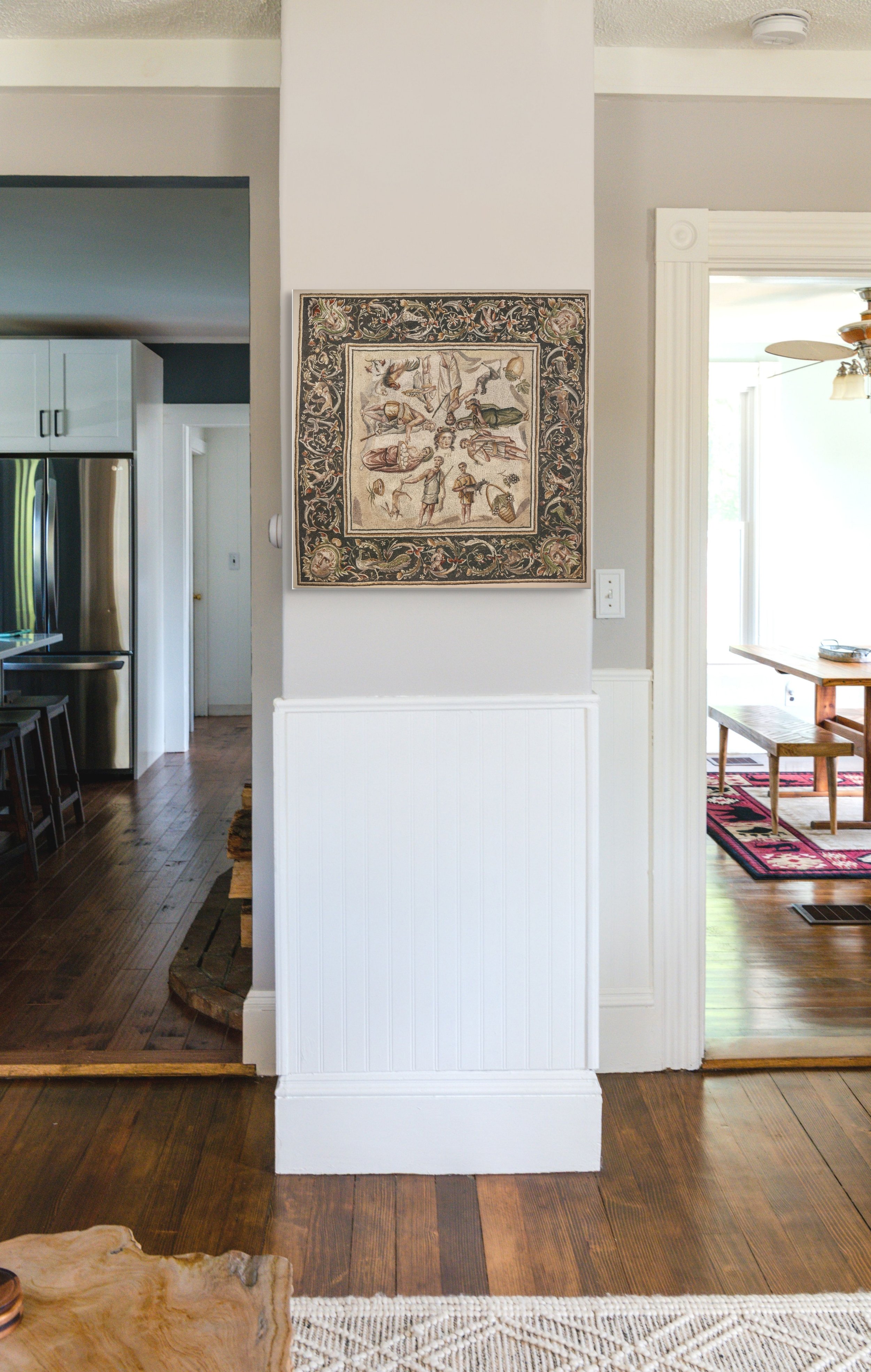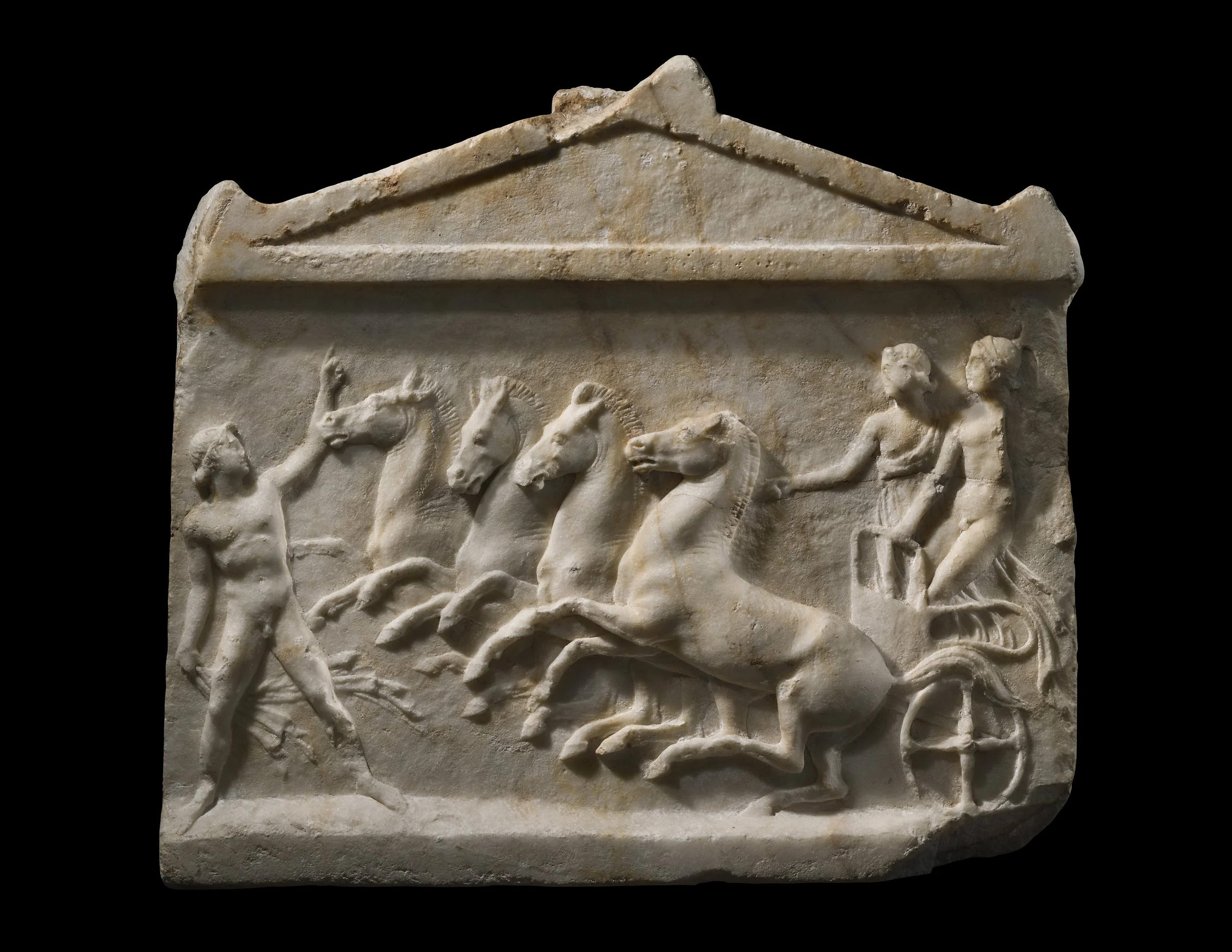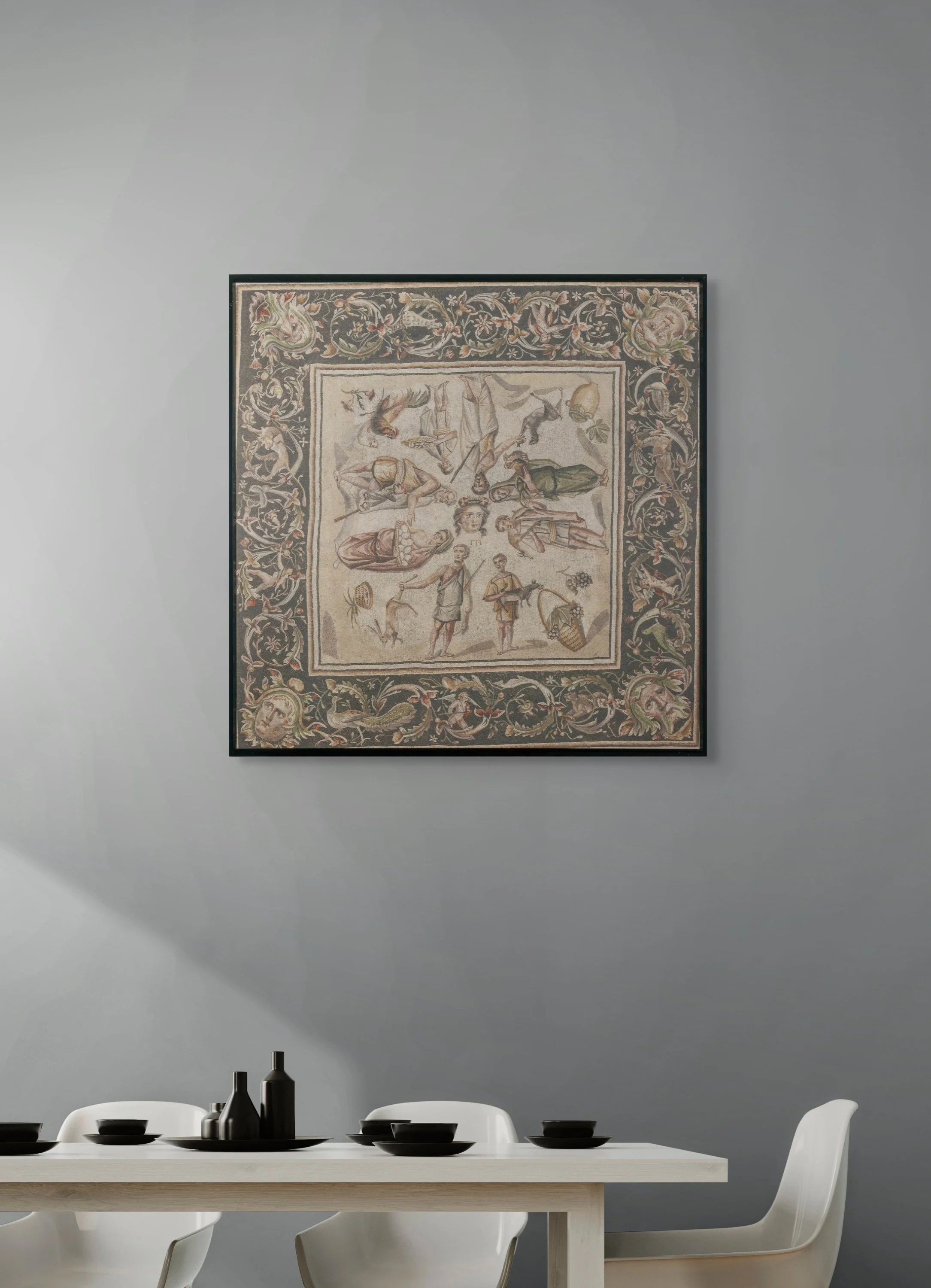 Image 1 of 15
Image 1 of 15

 Image 2 of 15
Image 2 of 15

 Image 3 of 15
Image 3 of 15

 Image 4 of 15
Image 4 of 15

 Image 5 of 15
Image 5 of 15

 Image 6 of 15
Image 6 of 15

 Image 7 of 15
Image 7 of 15

 Image 8 of 15
Image 8 of 15

 Image 9 of 15
Image 9 of 15

 Image 10 of 15
Image 10 of 15

 Image 11 of 15
Image 11 of 15

 Image 12 of 15
Image 12 of 15

 Image 13 of 15
Image 13 of 15

 Image 14 of 15
Image 14 of 15

 Image 15 of 15
Image 15 of 15
















Roman Market Scene Print
Contempo
2025
Cotton Print Stretched on Wood Canvas
Compact: 51 cm x 51 cm (20 in x 20 in)
Classic: 64 cm x 64 cm (25 in x 25 in)
Ancient Original
Roman, 2nd-3rd century A.D.
Stone and glass paste tesserae
314 cm x 320 cm (124 in x 126 in)
Description
This crystal porcelain print depicts the center of the Roman city; market, where ancient peoples found their daily goods. The original mosaic stood at 10 feet tall and wide, or over 3 meters, making this print’s detail exemplary.
The central ornamentation shows a market scene. Eight male figures of different ages, each dressed in a short tunic or in a toga, are positioned harmoniously on all four sides of the square central panel. Each carries or presents a different product: a hare, a young wild boar, a deer, a brace of pheasants, a kid goat, a rooster and a hen, a brace of partridges, fruit and/or buns in baskets.
All these elements embody products offered by Mother Earth, whose personification is symbolized at the center of the mosaic through a female face. Together with the theme, the inscription in ancient Greek can leave no doubt about her identification: Gh.
As for the outer border, it is strongly emphasized by a plant pattern composed of flowers and fruit in a dense green foliage. Small winged erotes, each armed with a bow and arrow, are depicted on each of the four sides of the mosaic. They hunt a variety of prey, such as peacock, partridge, deer, panther and even lion (one is already wounded by an arrow shot by one of the erotes).
In the corners, the traditional faces and masks are present; two men and, perhaps, two women are featured in opposite corners. Their plant-like hair fits perfectly into the thematic framework of the mosaic, representing pastoral divinities.
The very large size, the theme (a genre scene) and the technique of this mosaic suggest that it was produced in the eastern part of the Roman Empire. Large-scale figural representations are actually typically Levantine productions. Our example probably decorated a private residence and would have been specially commissioned by the owners, because mythological scenes were much more common than daily life representations.
Contempo
2025
Cotton Print Stretched on Wood Canvas
Compact: 51 cm x 51 cm (20 in x 20 in)
Classic: 64 cm x 64 cm (25 in x 25 in)
Ancient Original
Roman, 2nd-3rd century A.D.
Stone and glass paste tesserae
314 cm x 320 cm (124 in x 126 in)
Description
This crystal porcelain print depicts the center of the Roman city; market, where ancient peoples found their daily goods. The original mosaic stood at 10 feet tall and wide, or over 3 meters, making this print’s detail exemplary.
The central ornamentation shows a market scene. Eight male figures of different ages, each dressed in a short tunic or in a toga, are positioned harmoniously on all four sides of the square central panel. Each carries or presents a different product: a hare, a young wild boar, a deer, a brace of pheasants, a kid goat, a rooster and a hen, a brace of partridges, fruit and/or buns in baskets.
All these elements embody products offered by Mother Earth, whose personification is symbolized at the center of the mosaic through a female face. Together with the theme, the inscription in ancient Greek can leave no doubt about her identification: Gh.
As for the outer border, it is strongly emphasized by a plant pattern composed of flowers and fruit in a dense green foliage. Small winged erotes, each armed with a bow and arrow, are depicted on each of the four sides of the mosaic. They hunt a variety of prey, such as peacock, partridge, deer, panther and even lion (one is already wounded by an arrow shot by one of the erotes).
In the corners, the traditional faces and masks are present; two men and, perhaps, two women are featured in opposite corners. Their plant-like hair fits perfectly into the thematic framework of the mosaic, representing pastoral divinities.
The very large size, the theme (a genre scene) and the technique of this mosaic suggest that it was produced in the eastern part of the Roman Empire. Large-scale figural representations are actually typically Levantine productions. Our example probably decorated a private residence and would have been specially commissioned by the owners, because mythological scenes were much more common than daily life representations.
Creation
The creation of the contempo starts with research into authentic masterpieces, allowing Antico Contempo to determine how antiques can be thoughtfully reimagined through a contemporary lens. Every piece is examined to identify its unique qualities and what processes are required for adaptation.
High-resolution photographs are captured with real-time adjustments, as well as an extensive post editing process, allowing for the highest quality digital files possible.
The photographs are printed using world-class printers and tested for durability and perfect sizing. The frames are added by artisans who use aluminum or wood to give the historical artwork its final touches in its new contemporary form.
Thus, Antico Contempo creates a physical art piece that combines aesthetics of both the ancient and contemporary world.


































